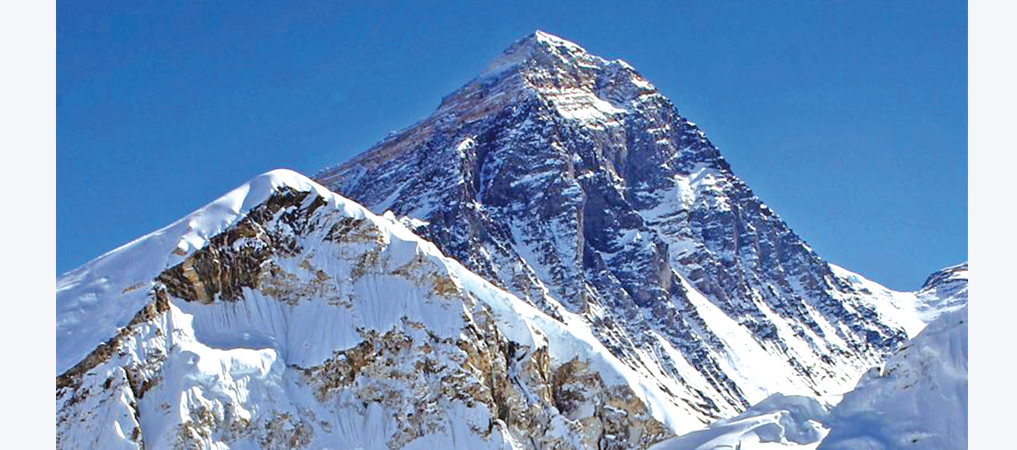Halting of mountain climbing to hit livelihood of locals, revenue

CK Khanal
With the arrival of spring season, preparations for mountaineering were in progress and a team of Sherpa guides had already reached Everest Base Camp for rope fixing.
But the government decided to halt all climbing activities of the season in view of the possible outbreak of the novel coronavirus (COVID-19), which has greatly worried all the entrepreneurs, including expedition operators, and workers.
Prior to the government’s decision regarding this, the Department of Tourism (DoT) had issued climbing permission to 13 climbers associated with five expedition teams for attempting five peaks, including Amadablam.
Mira Acharya, director at the DoT, said that two additional teams had also taken pre-permission from the department to climb Mt. Everest and Lhotse this spring.
Expedition teams used to take pre-permission from the DoT by paying 5 per cent of total royalty for Mt. Everest and 10 per cent of royalty for other peaks to import logistics required.
She said that some expedition teams had already purchased logistics and transported them to Lukla and Namche. A team of rope fixing Sherpas had reached Everest Base Camp and were waiting for instructions to carry out their responsibility, she added.
High impact on employment
Though the decision of the government was expected after China Tibet Mountaineering Association took a decision not to allow climbing Mt. Everest from the Chinese side, concerns have been expressed over its impending effects on Nepal’s mountain tourism and local economy, including employment.
Acharya said that thousands of high altitude workers would be directly affected by the decision to halt all expeditions. Spring is the main season to climb peaks in Nepal.
As climbing is a major tourism activity in the country, a large number of people living in the high Himalayas rely on mountaineering for their livelihoods.
Acharya informed that a total of 1,005 high altitude workers, guides and Sirdars were engaged in expedition works in the spring of 2019.
This data doesn’t include the local porters and supporting staff involved in expeditions, she added.
Besides, a large number of families used to be benefited from the arrival of tourists. For examples, taxi drivers, airlines and helicopters, local hotels and logistic traders used to stand to benefit from expeditions, she said.
It is believed that arrival of one tourist could support 11 families of the country, she added.
Santa Bir Lama, president of Nepal Mountaineering Association (NMA), said that around 100,000 people get engaged directly in the mountaineering sector and many others involved indirectly would be affected by the halt of spring climbing.
Lama said that the interested climbers could be attracted to next autumn season if the spread of coronavirus was completely controlled by the end of June. Autumn is the second major season to climb mountains in the country.
He said that the loss that the tourism sector would bear would depend on how long the pandemic of coronavirus would affect the world.
He said that the tourism sector might be affected for the next couple of years if the spread of the coronavirus continued to affect the people of the world for longer. The world economy would be adversely affected from the pandemic, he added.
Loss in government revenue
From the decision of halting all climbing activities in the countries, the government itself is going to lose a large amount of revenue it could earn from granting permission to climb the peaks.
The government has allowed climbers to attempt 414 peaks. In spring last year, the government had received around Rs. 496.55 million as the royalty from permit issuance alone.
In spring season last year, a total of 887 climbers had taken permission to climb 34 different peaks. The climbers were associated with a total of 114 expeditions.
In the same season of 2017, the government had collected Rs. 413.95 million by issuing climbing permission to 857 climbers of 107 teams.
On the other hand, NMA used to collect around Rs. 130 million royalty from 27 peaks for which it issues climbing permission. Out of the total royalty collected by NMA, 25 per cent each peak goes to the respective local levels and State government, and 5 per cent to Nepal Mountain Academy.
Lama said that the NMA issued climbing permit to around 1,200 climbers to attempt 27 peaks in spring last year.
(Khanal is a TRN journalist.)
Recent News

Do not make expressions casting dout on election: EC
14 Apr, 2022
CM Bhatta says may New Year 2079 BS inspire positive thinking
14 Apr, 2022
Three new cases, 44 recoveries in 24 hours
14 Apr, 2022
689 climbers of 84 teams so far acquire permits for climbing various peaks this spring season
14 Apr, 2022
How the rising cost of living crisis is impacting Nepal
14 Apr, 2022
US military confirms an interstellar meteor collided with Earth
14 Apr, 2022
Valneva Covid vaccine approved for use in UK
14 Apr, 2022
Chair Prachanda highlights need of unity among Maoist, Communist forces
14 Apr, 2022
Ranbir Kapoor and Alia Bhatt: Bollywood toasts star couple on wedding
14 Apr, 2022
President Bhandari confers decorations (Photo Feature)
14 Apr, 2022











